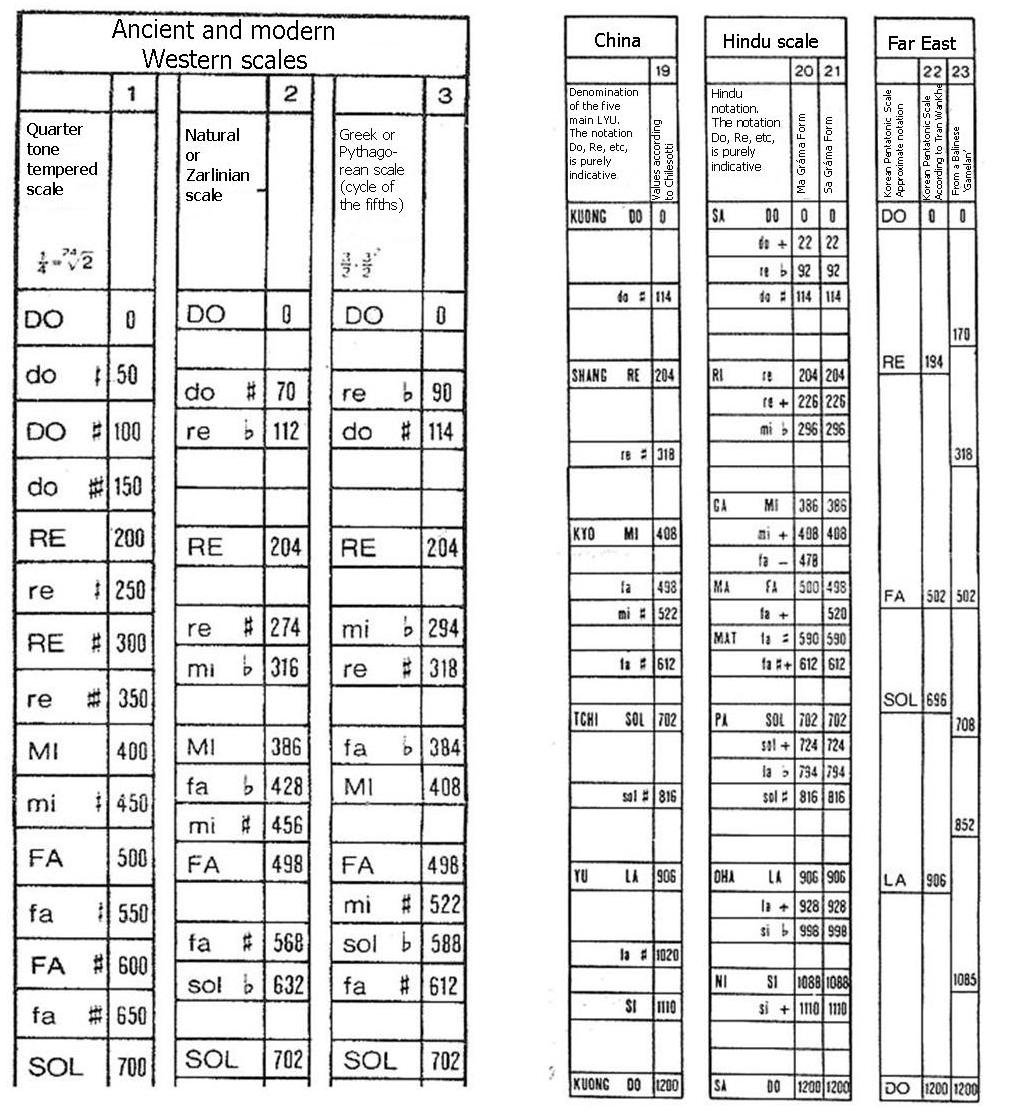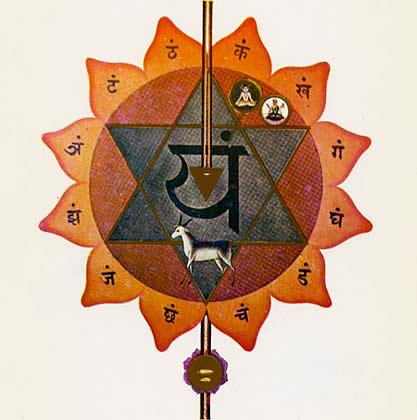
Symbolic representation of the cardiac Chakra in the Veda tradition, also called the twelve-petal Lotus.
Esoteric reading of a Vedantine Symbol, the Cardiac Chakra seat of receptive intelligence
For the Vedic tradition that energetic center (energetic knot or ganglion) is the seat of active perception of the interaction with the Ego or Triad, so much so that the Eastern Brothers use a technique called Heart to Heart (Bridge of magnetic interaction) to verify the possible acceptance (Tyling) of a Neophyte in the Ashram (Loka or Lodge). This allows them to ‘perceive’ the emotional reality hidden in the mind of the novice and to determine his acceptance or rejection with peaceful certainty.
I suggest that the Brothers who don’t know this Technique avoid any hypothesis or analogy with devotional or mystic aspect, but they should rather consider it, even if from the outside, as an advanced mode of energetic interactive perception between an active and a passive pole. Granted that, let’s examine the elements that make this symbol.
The point of emission of the Center’s energy is along man’s spine and it develops through three vertical lines of tension. The main is fixed (neutral) whilst the other two (negative Prakriti and positive Purusha) intertwine like sinusoids.
The Brother must not ignore the analogy with the Caduceus of Hermes, with the three Trees of Knowledge and Good (active pole) and Evil (passive pole) and with the three Sephirotic Pillars invisibly traced on the Floor of the Masonic Temple.
At each intersection of the three Channels a Chakra appears; it opens up and projects its energetic corolla on the front of the body.
In the image we can see the map of the Chakras taken from an ancient ink on paper document found in Nepal.
We can also distinguish other symbols that perhaps we thought belonging to the western culture, such as the Cross and the Hexagram. Well, this demonstrates how those symbols originated in previous eras and among peoples different from those who later passed them on to the western culture, although it is legitimate to assume a much earlier matrix. |
|
I would like to propose to the researcher’s attention another document.
When the passive-active energies specialized on the vertical axis enter a superior level, they constitute a "perfection chamber" or Chakra.
The next image shows an ancient fabric mandala used by priests for meditations; it illustrates the achievement of the evolutional journey of man through the activation of the two energies, Shiva and Shakti and through the joining of all Centers; therefore the work accomplished, from the basal Center to the Center of the head of the Initiate, with the ‘restoration of the (divine) Order’ in the Chaos of physical matter.
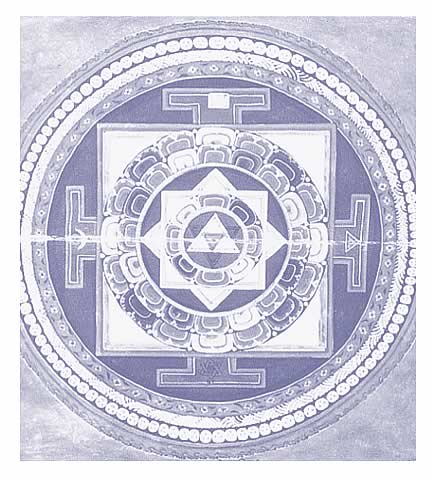
On the lower part of the vertical arm of the Cross, as well as at its center, we find the Hexagram once again. The so-called Seal of Solomon.
The Brother Mason should reflect upon the analogy between the image of this ancient mandala and the philosophical Map of the Temple of Ezekiel passed on by the Rose & Cross Hermetism (see reference). Both documents refer to the realization of the same Work in the Humankind.
After this basic information on the Chakra, let’s get back to the topic of this particular examination, the Anahata chakra or, for the Western esotericist, the seat of intellect (base of the Bridge that connects the separated entity of man to the Triad) or Cardiac Center.
Even in the understandable diversity of language, this Center has equal importance for the eastern and for the western initiate, because it is the seat of the first real initiation.
At the lighting of this Center, inside it the reflection of the great cosmic Entity appears, which Westerners called Christ (Chrestos) or Messiah and Easterners called Master Maitreya. Both agree in acknowledging It as the Entity that represents the 2nd Aspect of the Trinitarian expression of the One: the Master of Love and Wisdom.
The appearance of this reflection in the initiate gives a universal meaning to all that he later apprehends and comprehends and to the motive of any of his future actions.
Hermetic Philosophers call the cardiac presence of that reflection "the appearance of the Occult Master’. Mystics consider that first initiation as the birth of the Inner Christ and the Mystic Comm-union with the Soul (the completion of the first Bridge).
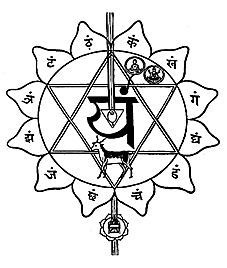
|
At the center we can see the vertical Bridge (Antahkarana for easterners) that goes across it, thus keeping it joined to the previous as well as to the following Center.
The corolla of the Anahata chakra is made of 12 (energetic) petals; as many as the signs of the Zodiac (called the Wheel of the Universe) that reflect into it.
The Christ, cosmic Entity that appears in the center of synthesis of this Chakra, has already been reflected in the 12 Apostles "lighting them", creating a Wheel of 13 Elements. We will see in the chapter dedicated to the Number 12 the meaning of this symbolism; for the moment we only verify the technical analogy between what has been done to "save" the humankind and what happens in man in particular, to "save him" through his own spiritual evolution. |
In each petal is inscribed a letter, therefore a particular sound.
The Indian Alphabet is one of the few sacred alphabets created by the Sacerdotal Caste that has reached us from the archaic era unchanged.
It doesn’t produce (artificial) sounds like many later alphabets and like all present ones, but it is ‘produced’ by the sounds it expresses. And it includes all the sounds that man’s physiology is able to express.
Still today the three-fold sonorous manifestation AUM is considered sacred.
Now for the researcher this happens for a precise and easily explainable reason.
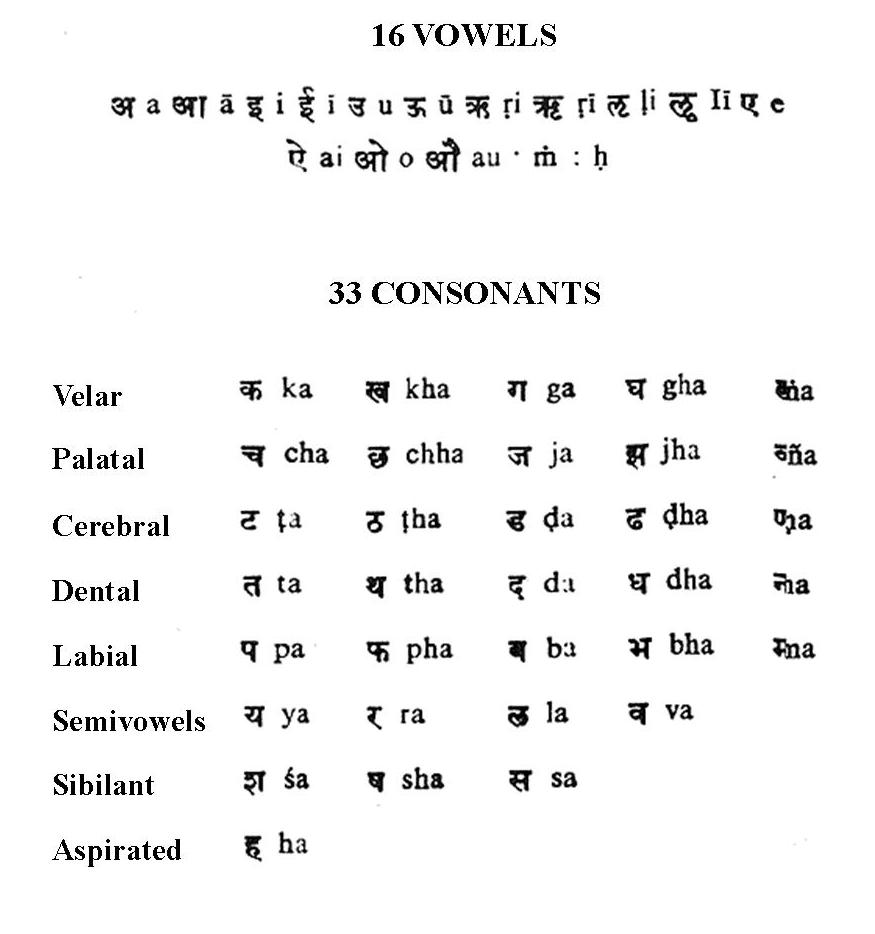
For the hermetic Philosopher the Point is sacred because it is the Archetype of all concrete forms.
But not only for this reason.
The consideration of the sacred Point occurs in the conceptual abstraction that the expressive abilities of all the ‘conceived and still conceivable’ forms lay latent in the Point. Here we find the Point as a metaphysical subject of manifestation in the unification of all that has been with all that is and all that will still be (atemporal substance).
Therefore it is sacred mostly because it escapes the yoke of the rules of time, where man is immersed and imprisoned. Nevertheless the ‘time’ dimension, as Initiates know well, is an effect connected to the Form but not man.
Man is subjected to the time dimension in so far as he is connected to the Form and its thoughts. Philosophers have always considered, in hermetic words, the mercurial mind as an "infra-dimensional liquid" already superior, as an element, to the Form that it contained and expressed.
If this key is developed it leads to the liberation of man from the (restrictive) concept of the Form element, freeing the perception of his conscience in the atemporal concept of space.
The Path that I have just mentioned is called Philosophy without support (of the Mind) or Vacuum Conscience. In that vacuum the Initiate has the first "cognition" of the Triad and the "recognition" of it and all its attributes.
I can add that the "vulgarization" of the Point happens when it is moved to determine a form. This will of motion (of the creator), when determining a particular form, excludes in actual fact in the Point the ability to contain "abstractly" all the others. Therefore it stops being Archetype and it appears as a definite but separate Form. By analogy, this is the modus operandi of the Masonic G.A.O.T.U.
This is, in a few and bare words, the keystone of the Science of the Form.
Now, if we understood that key, we might bring this procedure back to the AUM, which is considered as the Archetype of every sonorous manifested Form of which the OM, as we will see, is the root.
The formal constitution of man allows the only expression, in the microcosm of its manifestation, of three fundamental sounds (vibration of energy in motion): the velar sound, whose synthesis is the Aaaaa; the palatal sound, whose synthesis is the Uuuuu; the labial sound, whose synthesis is the Mmmmm.
Due to the interaction of those sounds with the particular vibration of specific Chakras – it is premature to deal with this topic at the moment – we will have an energetic affinity between the sonorous velar vibration of A and the spiritual World. The same affinity in correspondences exists between the palatal sound of U and the World of Thought; and again through the affinity with another particular Center between the sound of M and the material World of Form (here we might deal with the reason why all the ‘magic earthly’ names start with the letter M).
Going back to the analogy with the Point as a sacred Archetype of every Form, we might be able to understand how the AUM symbolizes for the Eastern Initiate the sacred Archetype of every possible sonorous Form in the objective world of the manifestation of the microcosm man.
We have just re-discovered in the essence of sound, if not of terms, postulates that we will find again in the foundations of the Pythagorean School; but for the Initiate this is not yet the keystone of the Science of Sound.
Pythagoras expressed the concept of ‘point of no return’ with physicalness, in the metaphysical expression of the silent Sound.
This statement closes the circle East-West in the metaphysical expression of the OM,  ,Archetype of every immanifest Sound (see later on, in the chapter dedicated to the number 9).
,Archetype of every immanifest Sound (see later on, in the chapter dedicated to the number 9).
In considering the twelve-petal corolla we gave "form and meaning" to the external circle, the third of three, which this Chakra is made of. It is worthwhile to remember that the corolla or external circle is the result of the activity of the 3rd energetic cosmic Aspect, the Intelligent Activity of the creative power of the One in the Will of manifestation.
The esotericist differs from the ordinary man because he doesn’t care for what appears, or as a container appears, be it a word, a concept or a symbol; least of all he embraces a biased "faith"; instead he tends to penetrate its synthetic and timeless substance (teaching), stripping it of the corruptible and changeable characteristics of the form with the changing of languages and interpretations. Thus when we enter the second circle of the Symbol we will not mistakenly embrace one of the two "forms" by which this area of energy is expressed for the people, Mother aspect or Son aspect, but we will rather consider its ability of meaning, as we have done with all the others, through the esoteric principles of an abstract and synthetic observation.
Penetrating the second circumference we enter the attractive and magnetic field of the 2nd Aspect of the three-fold manifestation of the One. This aspect is defined in the balancing qualities of Love and Wisdom.
Our first work will be to determine a symbolic and philosophical value for the two deities and the animal that surround the central symbol of the Hexagram (the Trikona). But this must happen in an Eastern view, because the Initiate who created this Symbol composed the "language" inscribed in the circumferences thinking of the Easterners.
Shatchakra Virupana verses 2227:
The Heart of the Lotus has the color of the Flower of Bandhuka (red) and its 12 petals are the letters from Ka to Tha, with the Bindu (drop) above the vermilion color.
In its pericarp there is the hexagonal Vaju Mandala of a smoky color and above the Surja Mandala with the Trikona (hexagram) shining like ten million blinding rays.
Above there is the Vaju Bija (seed) of a smoky color and it is sitting on a black four-armed antelope holding the goad (anckuscha). On its lap (of Vaju Bija) there is the three-eyed Isha.
Like Hamsa (Hamsabha) its two arms stretch out to give grace and dispel fear.
In the pericarp of its Lotus, sitting on a red lotus is the Shatki Kakim.
It has four arms and it carries the Knot (Pasha – reminds us of the interpretation of the Masonic Knot of Love), the skull (Kapala) gives the grace (Vara) and it dispels the signs of fear (Abhaya).
It is gold-colored and it is dressed in yellow and it carries all varieties of jewels and a wreath of bones. Its heart is sweetened by the nectar (the nourishment that causes the reawakening of Kundalini).
In the center of the Trikona there is Shiva in the form of a Vana-Linga, with a crescent moon and Bindu (drop) at its top.
He is gold-colored and joyously looks with a surge of (creative) desire.
Below it there is the Jivatma like Hamsa and it resembles the flame of a lamp (the secondary Chakra that you can see in the symbol, placed below the main one).
Below the pericarp of this Lotus there is the eight-petal red Lotus, with its head looking up and in this (red) lotus there are the Kalpa Trees (that rule the universes), a jeweled altar surmounted by a veil decorated with flags and similar things and it is the place of mental adoration.
Like for all the Sacred Texts of the Humankind it would not be a good idea for the Brother who wants to penetrate the meaning of the words used in them to attribute them, even to the most apparently obvious ones, their literal meaning. Because in that superficial value is hidden the defense predisposed for the profane eyes of the less advanced Castes.
In the Shiva Samhita translated by Sris Chandra Vidyarnava we find the description of the effects on the man who visualizes and meditates on this Center.
He obtains incommensurable knowledge, he knows past and future; it is clairaudient and clairvoyant and he can move in the air he wants to (projection of one’s own perceptions and telepathy).
He sees the Adepts, he knows the divinities known as Yogini (Angels), he obtains the faculty known as Khechari, he conquers the creatures that move in the air (the thought forms of astral and ethereal). When he contemplates daily the hidden Banalinga he certainly obtains the psychic powers called Khechari (moving in the air) and Bhuchari (go anywhere in the world by will).
All these are obvious "effects" of the illumination of the Initiate produced by the manifestation in him of the power of the attributes of the Soul.
For the Brother that hasn’t the ability to stop his mind at the understanding of the symbolic meanings contained in the parts mentioned in the two sacred texts, I will concretely sum up the necessary elements.
The two divinities placed in the symbol in a particular position manifest the presence in the Chakra of the two Energies, improved, coming from the Positive-Negative.
The Hexagram, geometrical shape connected to the Air Element, represents the achievement of a particular level of the Form of the initiate for the simultaneous presence of six of the energetic Aspects and it hides in its center a seventh: the first of the seven Aspects.
But we will give more details on the hexagram when we will deal with the reading of the intrinsic meanings of the Numbers 6 and 7.
The antelope, like all the animals used in sacred allegories, has the meaning of a virtue. In this instance it is a symbol of ‘speed’; it represents the Air Element of the Cardiac Chakra.
In the symbology of Elements we must consider:
Earth Element, |
the square, |
solid, |
smell. |
Water Element, |
the crescent moon, |
liquid, |
taste. |
Fire Element, |
the triangle, |
igneous or gaseous, |
sight. |
Air Element, |
two intertwined triangles, |
aerial, |
touch. |
Ether Element, |
the circle, |
ethereal, |
hearing. |
The red triangle that activates the internal part of the Chakra has as a seed (Bija) the syllable Ra. Of course we will not view the "rules" of Pranayama connected to the visible (via respiration) or invisible (via thought) pronunciation of the sounds we meet.
It is sufficient to remember that such rules give "life" to the sounds of the letters and words that the Initiate pronounces, imposing a reactive and intelligent substance to the air that we expire or inspire through techniques kept particularly secret; the basic one is the technique of visualization. However, if the latter is disconnected from the whole system it is only a technique to develop the potential of the mind.
And here we are at the end of our reading with the letter at the center of the Anahata Chakra; the sound that emanates from that Center making it corresponds to the Sanskrit letter Ya^m.
In the reconstitution of the sonorous value of any letter, but of course this is true for all alphabets, it is important to keep in mind that we must refer with a first enquiry not to the (artificially) tempered musical scale used in the west, but to the sacred and traditional (natural) scale of that Nation. In this case we are talking about the numeral and harmonious values of the Indian Raga.
This was not a study on Chakras, least of all an illustration of the physiological and energetic systems connected to them. It is the research of the conviction, through the nth evidence, that every corridor of esoteric knowledge invariably leads to a topic of vertex, the sound.
As I have already stated before, this is the goal where the effort of our reasoning lead us.
We must specify that to understand its efficiency (the Words of Power) we need to get to the Appendix of this work.
The Harmonic Scales
I am going to present scales of harmonic values (frequencies) that will be useful to the Brothers for consultation or for a quick comparison when, later on, he will deal with values (vibrations) among sounds of words, numbers, forms, energetic centers and colors.
